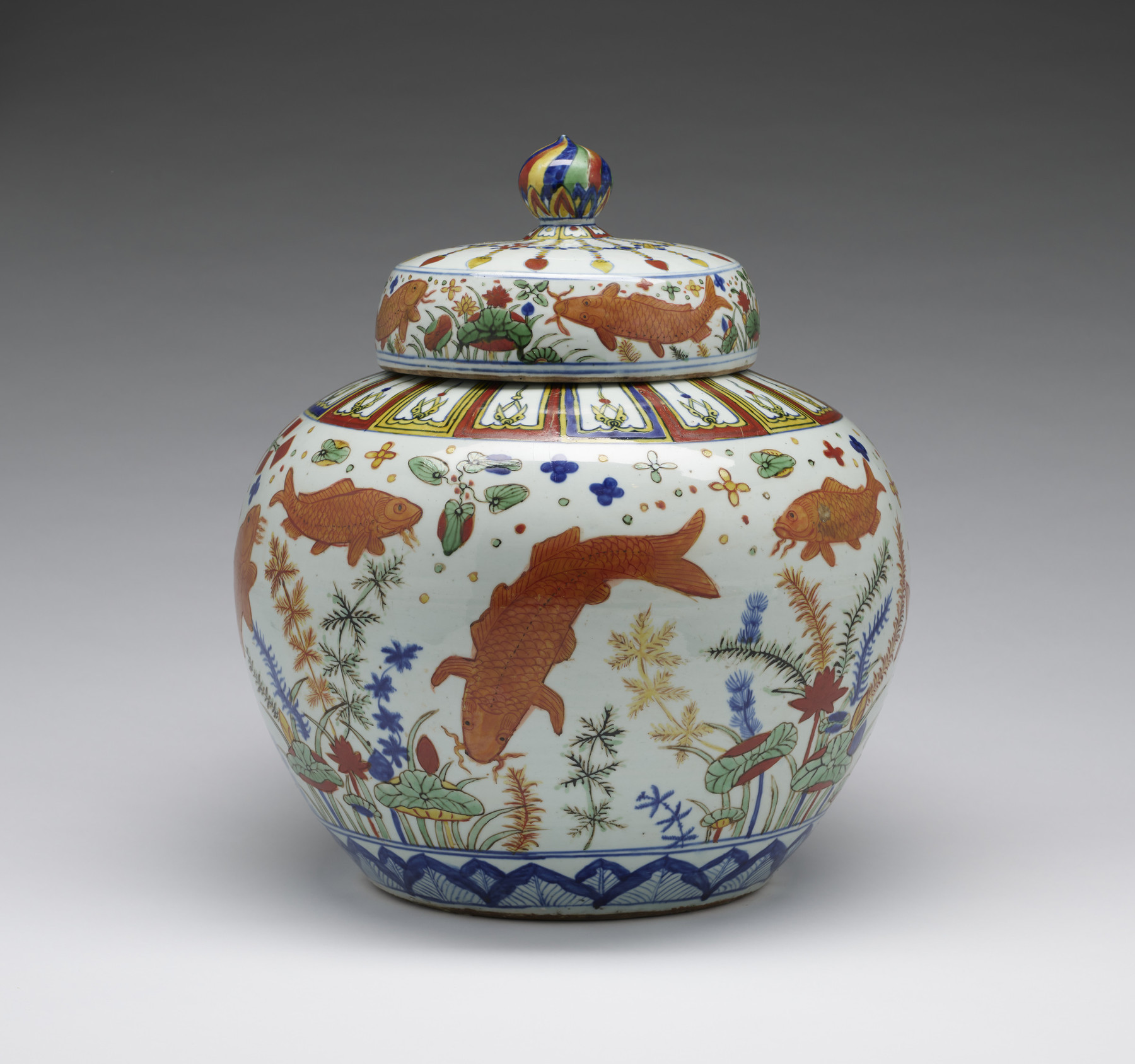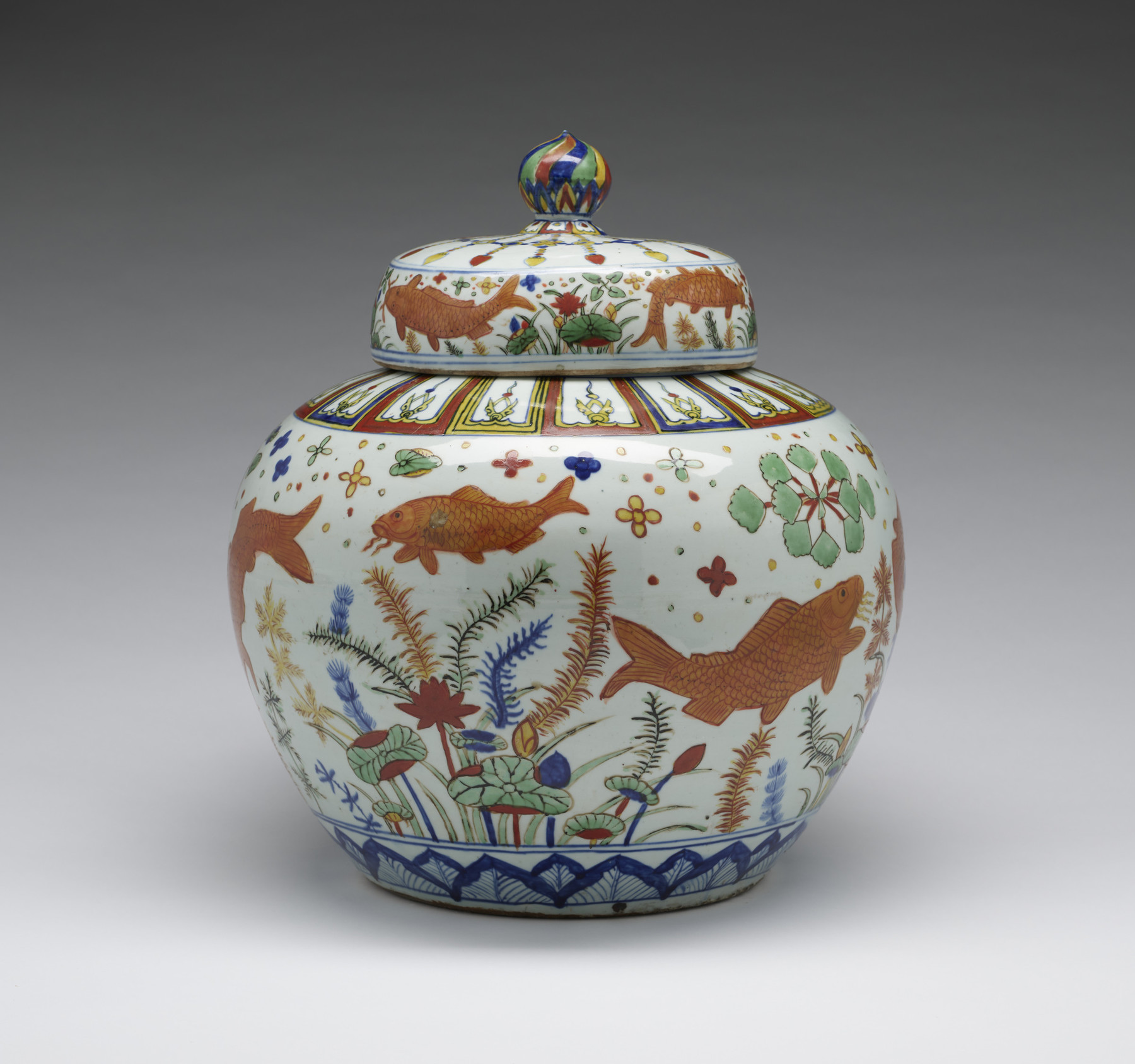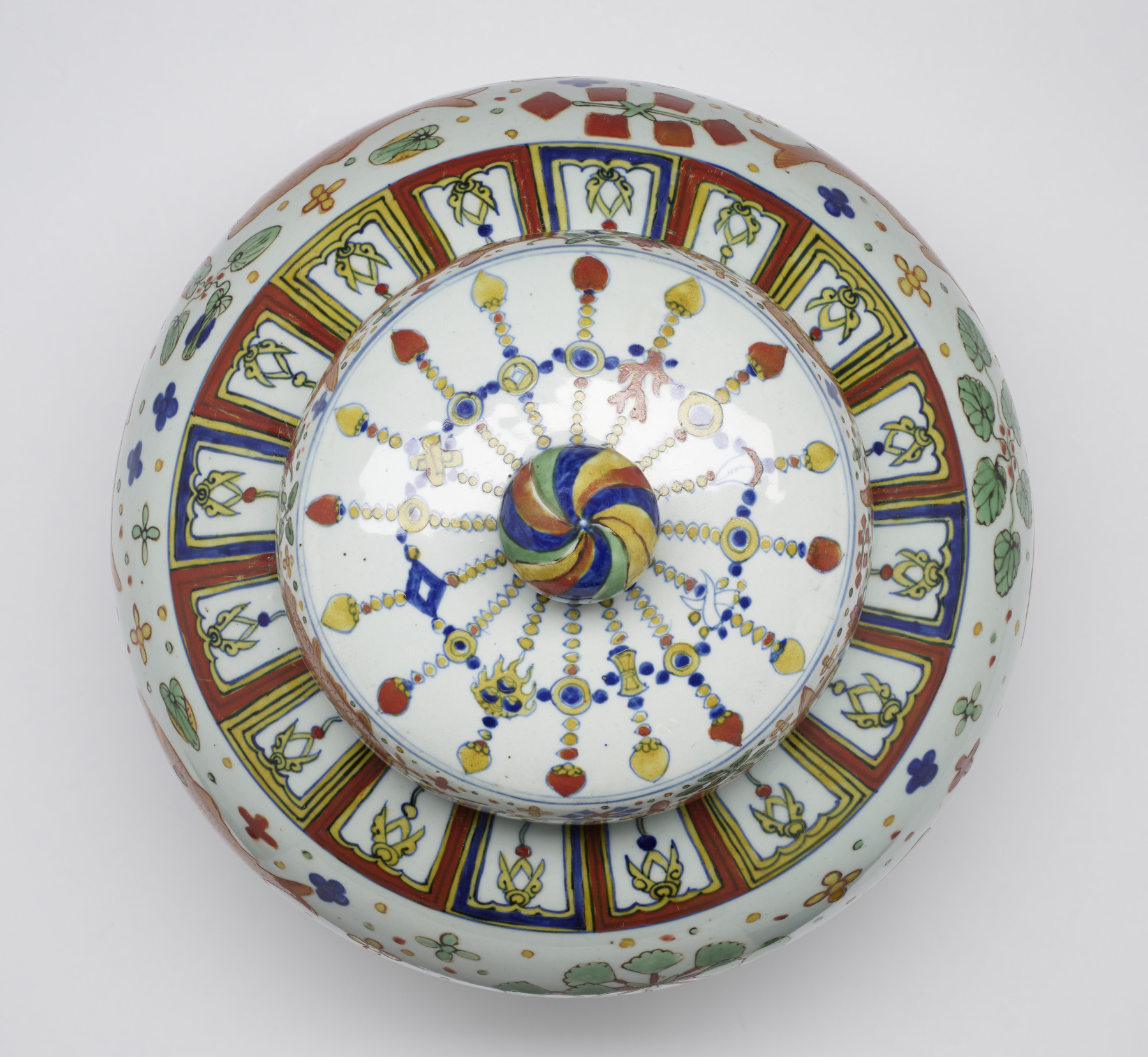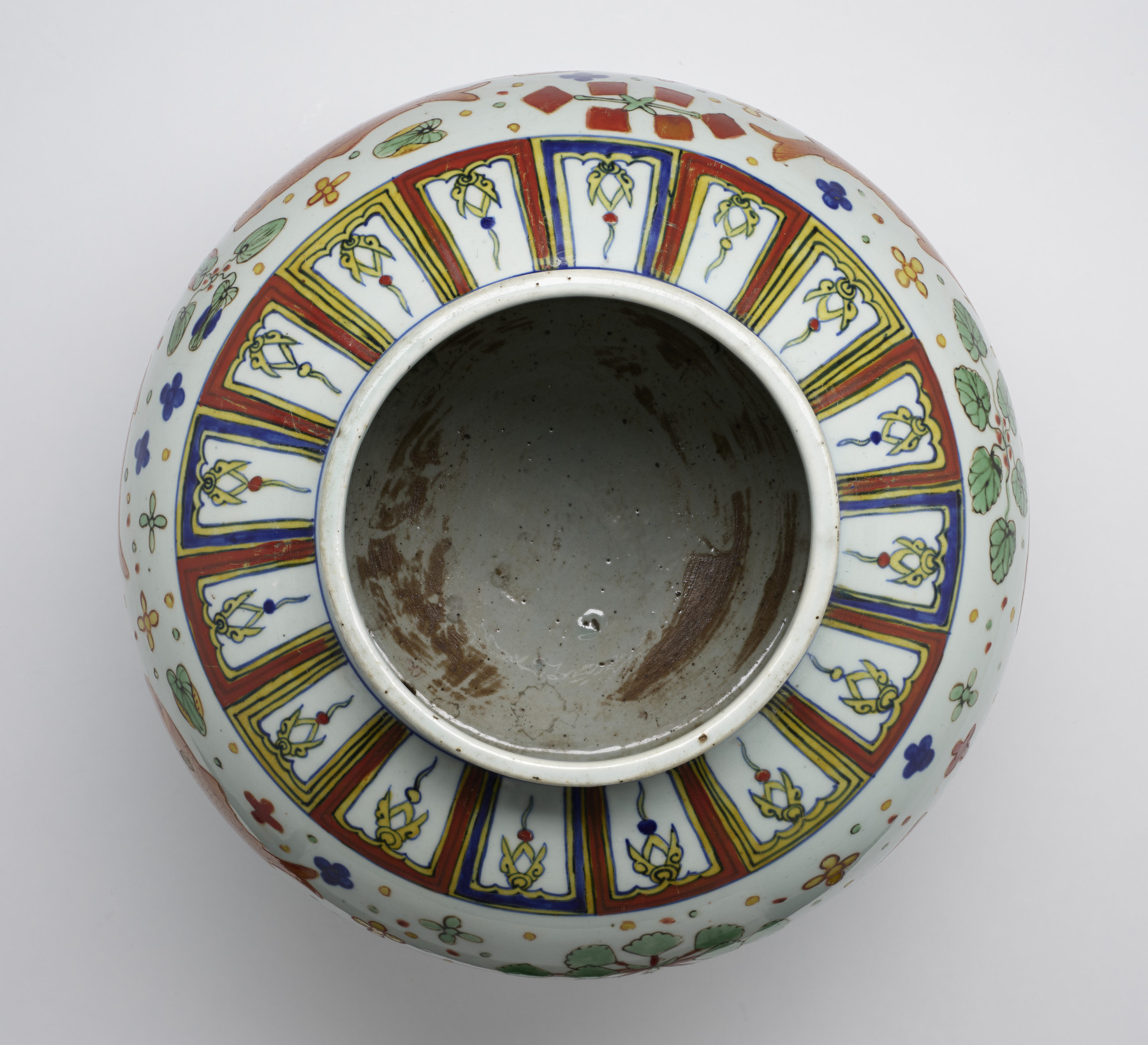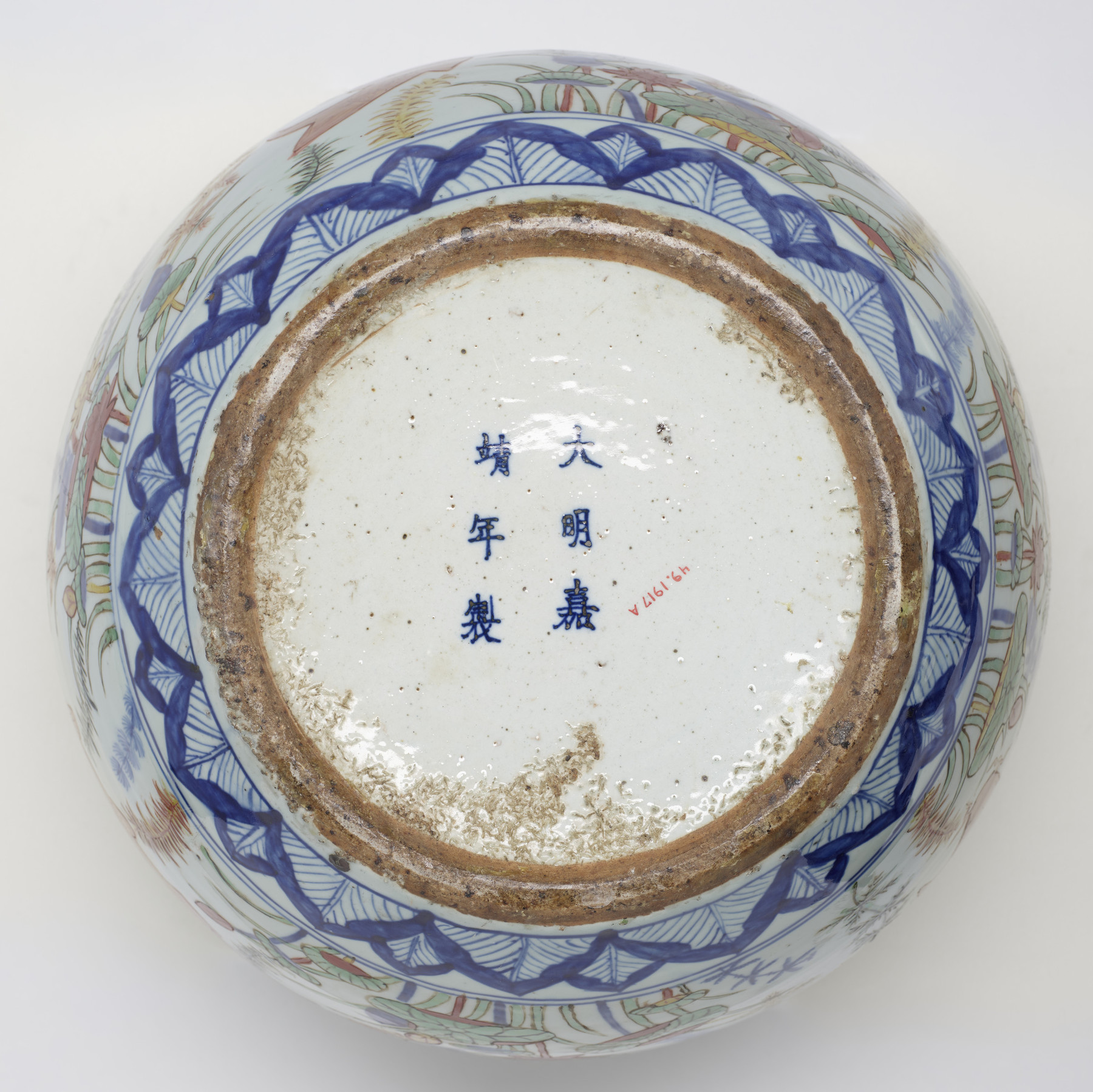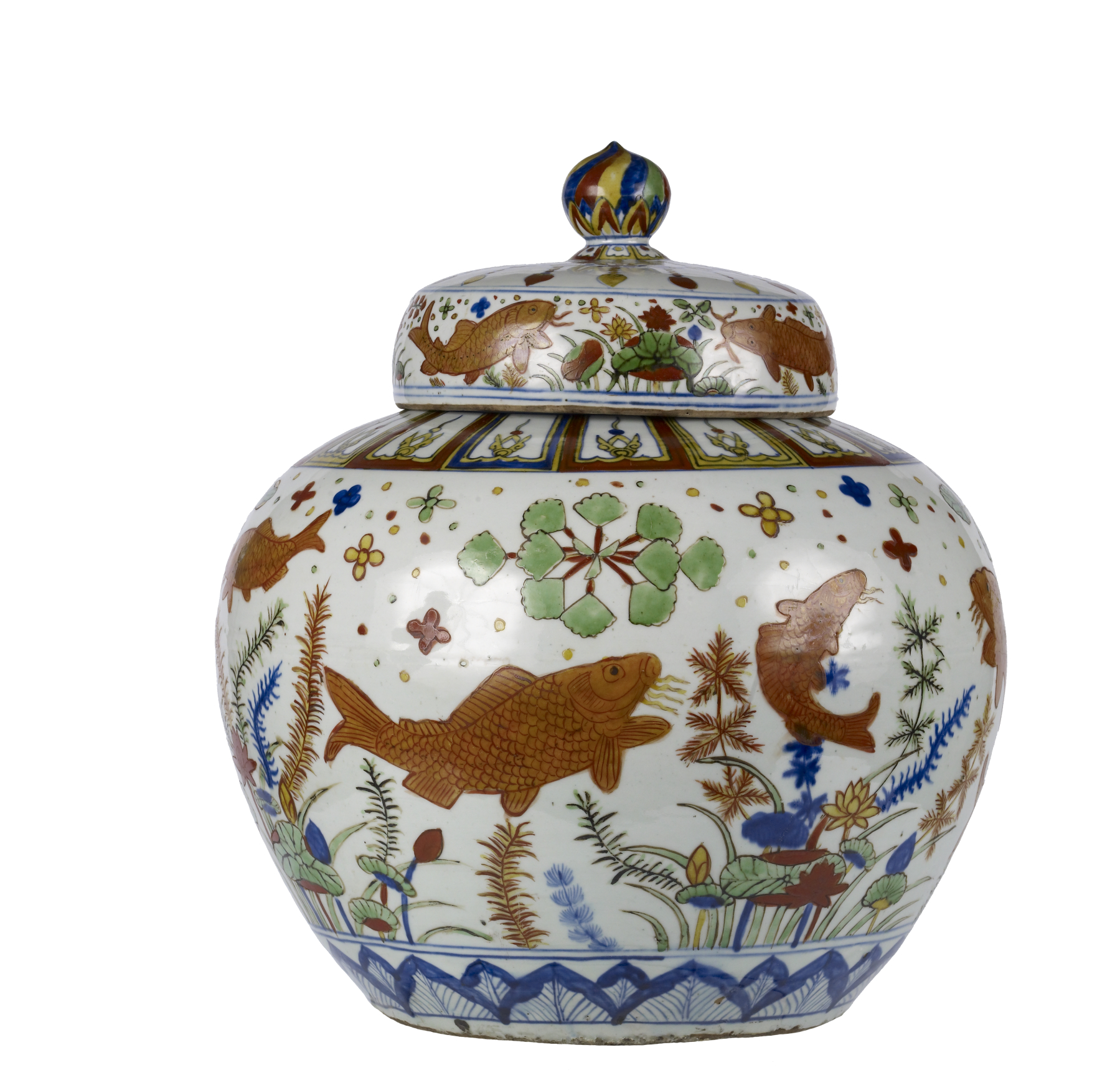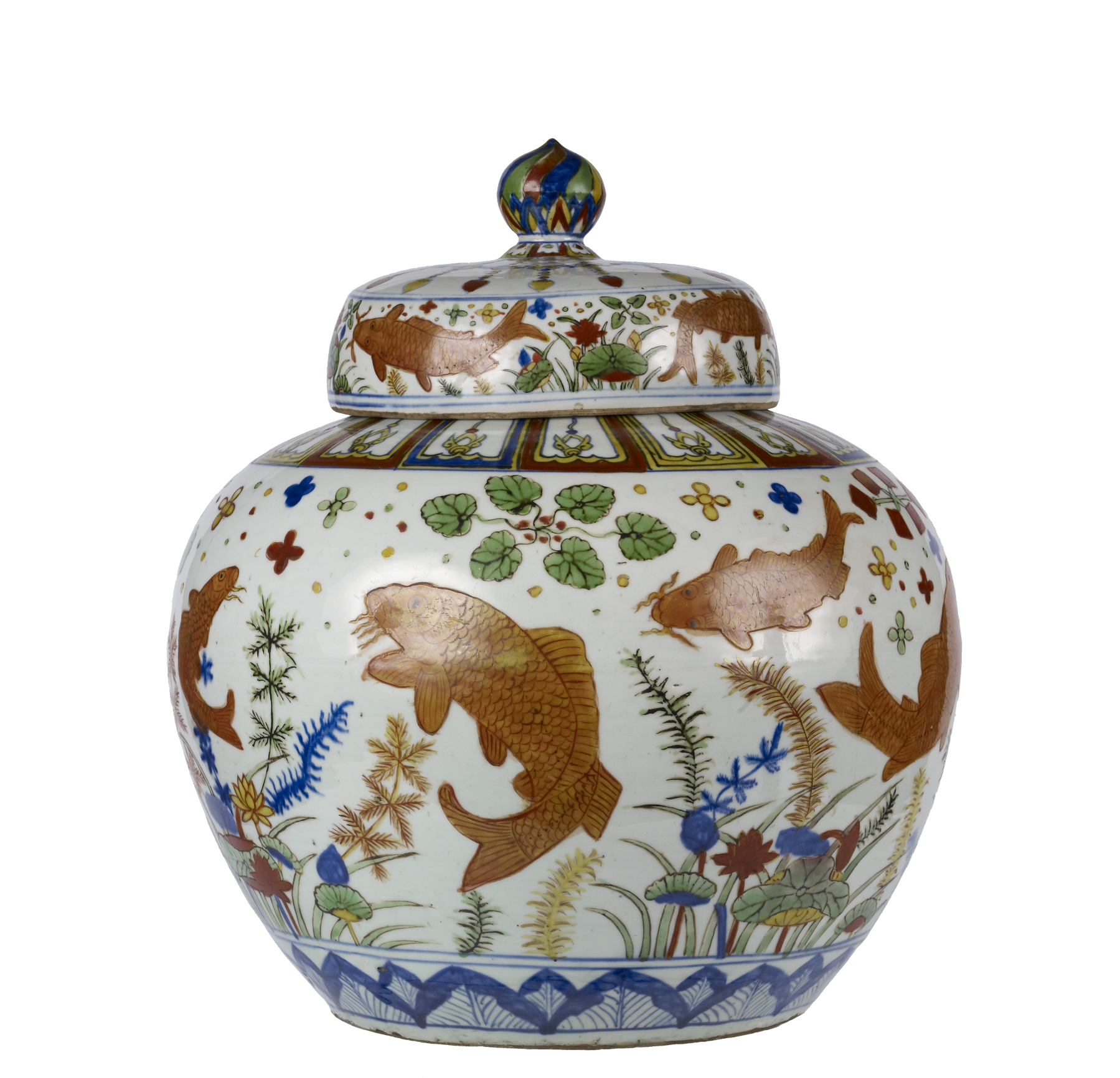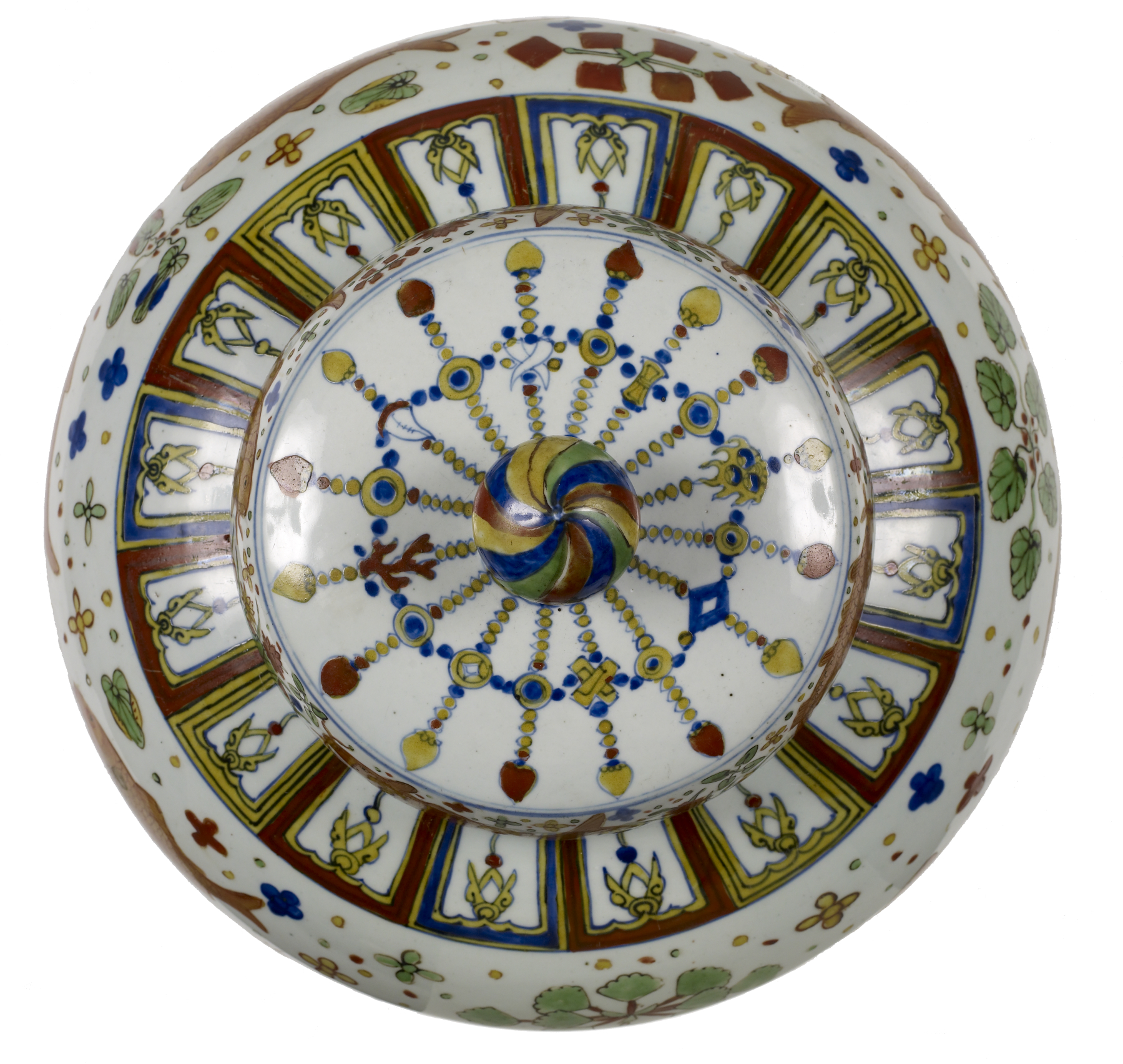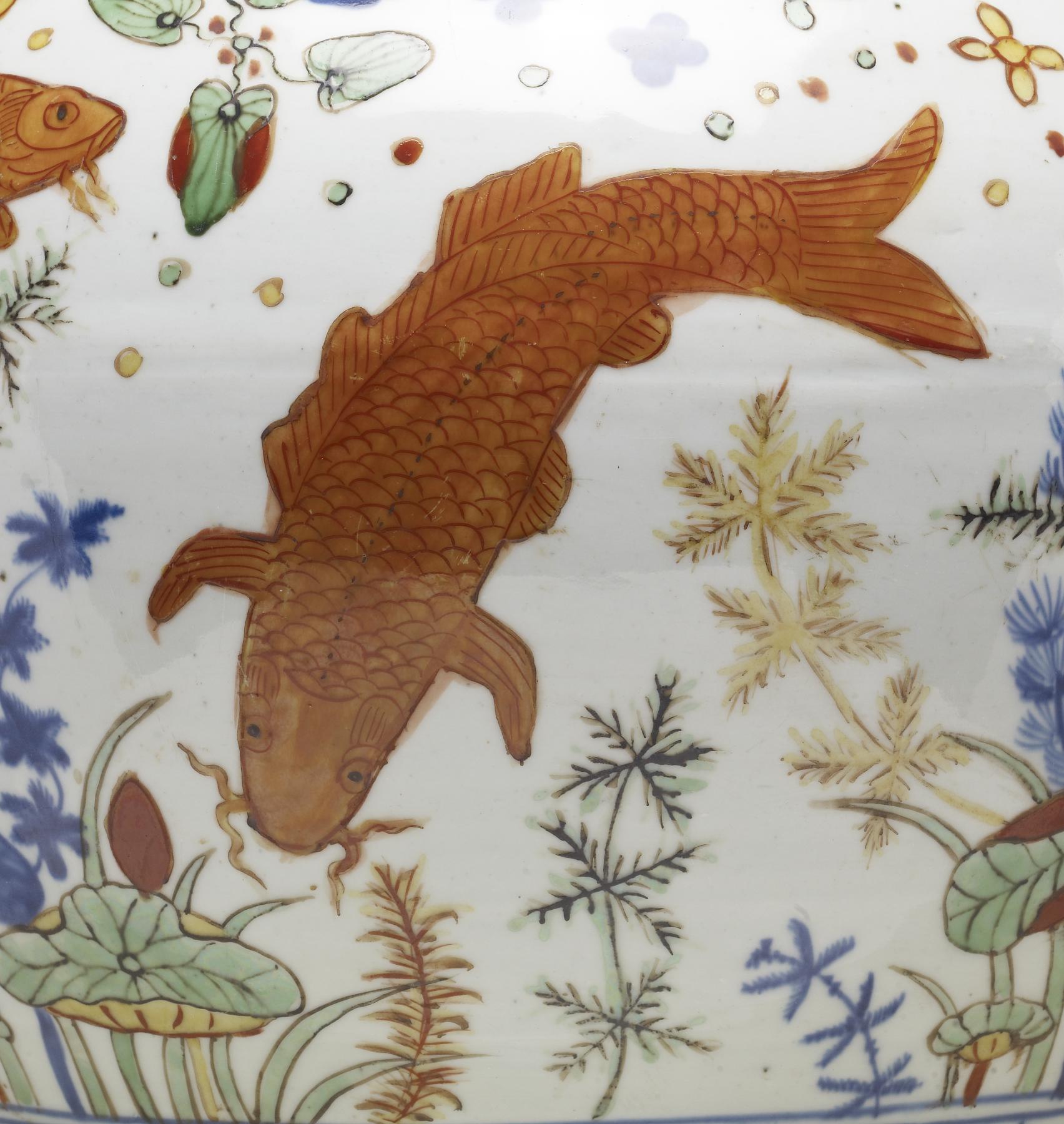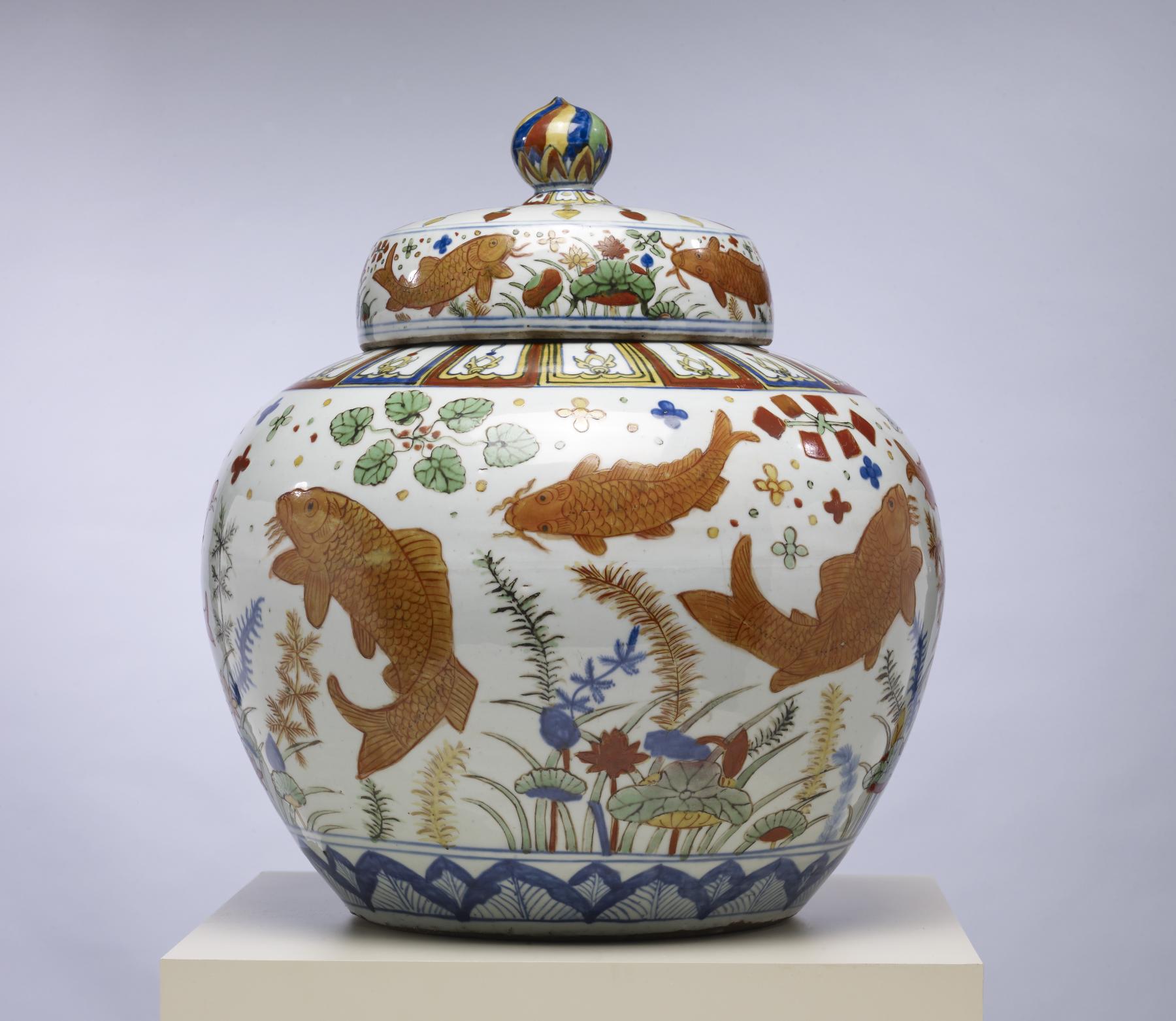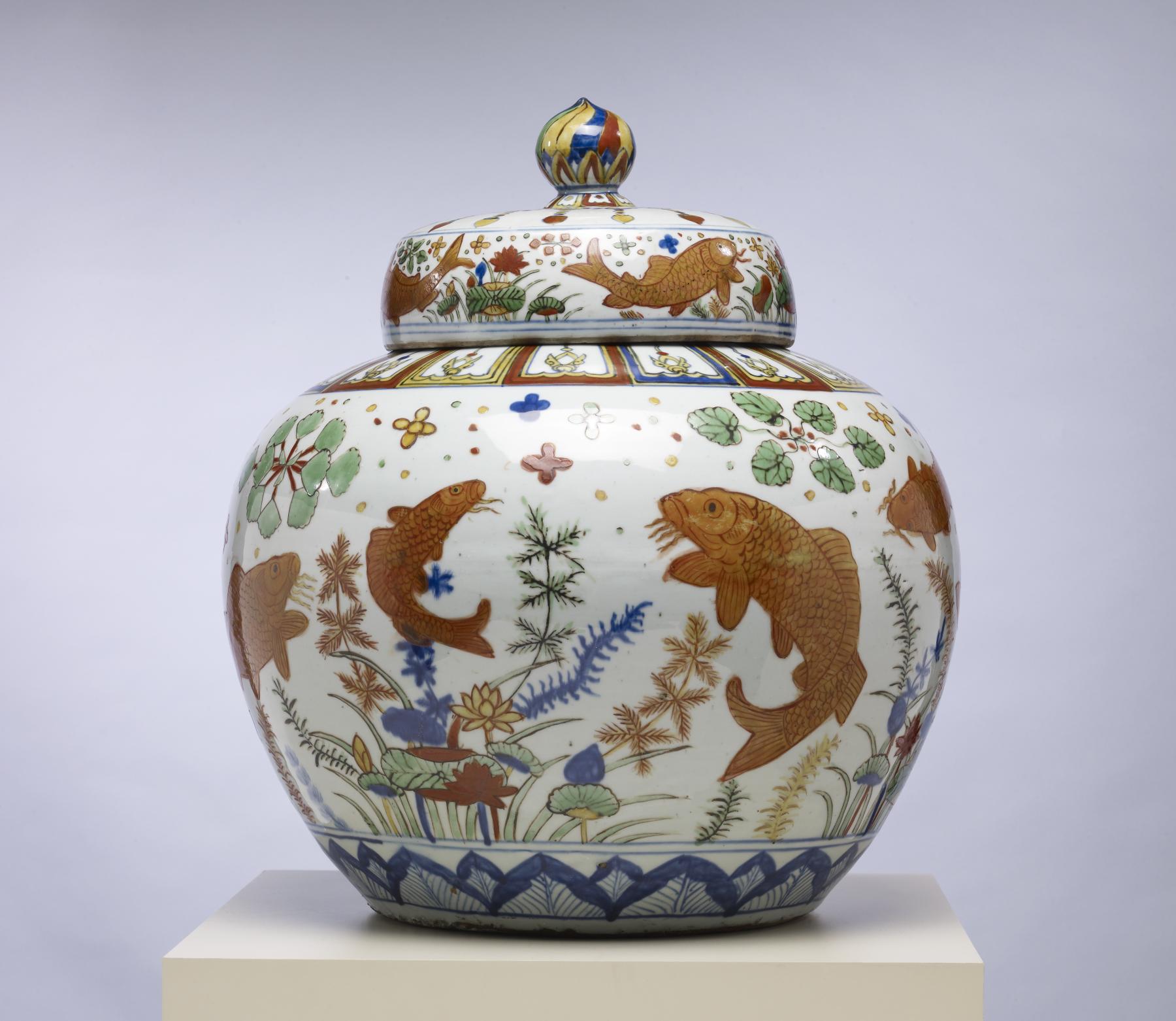Lidded Jar with Carp in Lotus Pond
(China )
This lidded jar boasts an exuberant design of golden carp swimming in a lotus pond. Fish are among the most favored motifs in China for their auspicious associations. The word for fish in Chinese, yu, is a homonym for “abundant” and “plentiful.” The carp itself traditionally conveys themes of transformation and transcendence, as well as social mobility. According to legend, carp are capable of transforming into dragons, represented as a “leaping carp.” The “leaping carp” motif became a metaphor for scholars hoping to pass the imperial examinations for political office—this was the primary way for upward mobility for educated males of any social class during the Ming dynasty (1368–1644).
With such a plethora of auspicious symbols and meanings, this lidded jar—used to hold wine or food—probably stood in the receiving hall or the scholar’s study of an elite family’s home. It is a masterpiece, one of only nine known jars of this type in museum collections worldwide and, among this small group, this jar is one of the most exceptionally well preserved and exquisitely painted.
Inscription
Provenance
Provenance (from the French provenir, 'to come from/forth') is the chronology of the ownership, custody, or location of a historical object. Learn more about provenance at the Walters.
Henry Walters, Baltimore, 1894-1908, by purchase; Walters Art Museum, 1931, by bequest.
Exhibitions
| 1980-1981 | Masterpieces of Chinese Porcelain. The Walters Art Gallery, Baltimore. |
Geographies
China (Place of Origin)
Measurements
H with lid: 17 11/16 x Diam: 15 13/16 in. (44.9 x 40.1 cm)
Credit Line
Acquired by Henry Walters, 1894–1908
Accession Number
In libraries, galleries, museums, and archives, an accession number is a unique identifier assigned to each object in the collection.
In libraries, galleries, museums, and archives, an accession number is a unique identifier assigned to each object in the collection.
49.1917



